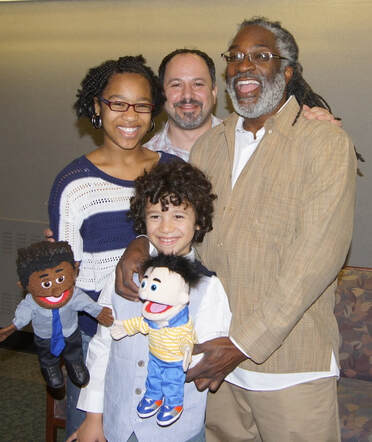|
Who are my children racially-ethnically and culturally? How do my collectivist parenting practices influence their developing sense of self? How do my children experience individualism in their other communities? The cultural styles in our home, within our home and family communities, and within the school community are pervasive. These styles influence many aspects of how my children and I function in the world and the occasional clashes I encounter while raising them. These are the questions, concepts, and stories I will address in this post. My collectivist identity as a Latina, of Dominican and Puerto Rican decent, greatly inform how I was raised and how I am raising my two multi-racial children. My cultural style not only influences how I see myself, it also impacts aspects of my behavior and the decisions I make on my children’s behalf. An ongoing struggle for me are the ways in which I honor my children’s mixed racial-ethnic identities, make room for the cultural style (individualism) they are learning from society at large, and the collectivist practices I use while socializing them to understand themselves as Latinos. The initial attitudes and positive images and messages I convey to them about our culture and values contributes to their perceptions of themselves and aids in their understanding of how they fit into our collective social group. However, because of the influences from other communities (peers, teachers, school neighborhood, and society at large) they are developing their own racial-ethnic identities and cultural styles. On occasion, I encounter clashes with my children due to the many micro and macro influences around them. What exactly is collectivism and individualism? Here is a small example. A White woman I know, who is raising her adopted Black child from an individualistic cultural style, needed a babysitter. I told her my daughter could do it. This mother wondered how I could make such a decision for my teenager. I explained that my daughter has many liberties to make decisions about her weekends, and she is equally responsible for the needs of our collective community. As the oldest child, my daughter and I regularly navigate her family responsibilities with her growing independence. Kendra Cherry wrote a great piece about collectivist culture. In it she talks about the emphasis being on the group, not on the individual. She writes, “Where unity and selflessness are valued traits in collectivist cultures, independence and personal identity are highly stressed in individualistic cultures.” Below are a few more concepts Cherry shares that capture what it means for me to have a collectivist identity.
Exert from The Knight in Rusty Armour “Ambition from the heart is pure. It competes with no one and harms no one. In fact, it serves one in such a way that it serves others at the same time.” “How?” “This is where we can learn from the apple tree,” Merlin said, gesturing above him. “It has become handsome and fully mature, bearing fine fruit, which it gives freely to all. The more apples people pick, the more the tree grows and the more beautiful it becomes. This tree is doing exactly what apple trees are meant to do — fulfilling its potential to the benefit of all. The same applies to people when they have ambition from the heart.” The apple tree in the story above becomes nourished because of what it allows others to take. The tree becomes “…handsome and fully mature,” even bearing “fine fruit,” not from what it takes from the world or what it does for itself, but from what it gives away freely. Reaching beauty is possible when more is taken from the tree. Image being that tree — with endless gifts to offer. I realized that the interactions my children have both within and outside of the family are impacted by my cultural beliefs, values, and practices as a collectivist and by the many times they encounter individualism. In fact, I recently read a study done in 2009 which showed that people’s cultural styles (ex: collectivism or individualism) and cultural affiliations (as collectivist or individualistic) even influence the brain functioning and underlying sense of sense. In addition to the cultural style I use in my parenting practices, I see the ways in which collectivism influences my children’s explorations of what it means to them to be racial-ethnic beings. My teenage daughter is a brown-skinned half Black and half Latina (Dominican and Puerto Rican) young woman. Up until recently, she used the words Black and Latina to define herself and I often thought that she saw these as two separate parts of her whole. This winter (2017) she began a Latinx high school course which has provided her with opportunities to further develop meaning around her identity. At a student-led conference at the end of January, 2017 I overheard her define herself as an Afro-Latina. This was a first for her, even though she has heard me use the phrase about myself. She is experiencing what the great Chicana scholar, Gloria Anzaldúa, refers to as “un choque,” or the “cultural collision” of her new consciousness, (la conciencia de la mestiza). She is entering a stage of her identity development that is abandoning the need to be either/or (Black or Latina) and instead to think in a more synergistic way about her sense of self and the intersectionality of her identities. My son is a light-skinned, half White (Lithuanian and Russian) and half Latino (Dominican and Puerto Rican) boy. He is a pre-teen and the language he uses to define himself is still rather departmentalized. He embraces all four ethnic groups to which he belongs and is beginning to explore what each of these mean to him. I am grateful to the work of Maria P.P. Root and her Bill of Rights for People of Mixed Heritage because it has taught me ways to step back so he can independently navigate his multiple identities. An experience he may encounter, if he has not already, is what it means for him to navigate his predominantly White school and school neighborhood with the privileges of being white and male in a way that his sister and I cannot.
3 Comments
Hilary North-Ellasante
5/23/2020 08:20:38 am
This post is such a beautiful example of where theory meets practice. While the terms "individualistic" and "collectivist" are not new to me, I had never before thought of them quite this way, through the lens of parenting. What a revelation!! Specifically, when thinking about intersections between racial identities and cultural values systems, it comes as no surprise that parenting styles are a place where we see these distinctions show up in (pardon the expression) technicolor. When I think about my work in predominantly white school communities, there have always been implicit and explicit tensions expressed (among teachers, administrators, and fellow parents) around how parenting approaches and styles (particularly) among families of color show up in these environments that place a premium on individualism. This individualistic/collectivist frame could be revolutionary in supporting communities that are working towards equity. The ways in which you link that frame to your own experience as a parent is icing on the cake!! Thanks for sharing yet another sparkling example of your brilliance, Dr. Chap.
Reply
3/15/2022 04:36:34 pm
It's interesting when you said that cultural differences can affect your behavior in different ways possible. My sister told me that she is looking for mental health blog that can help her understand cultural influences because it can affect her relationship with her family which is why she wants to make sure she can handle it. Thanks to this helpful article, I'll be sure to tell her that it will be much better if she tries to look for a mental health blog that is an engaging view of relationships, psychology, and modern life.
Reply
Leave a Reply. |
Dr. Sandra ChapmanLatina, Lesbian, Educator, Mommy of two. Committed to enriching her life with a diverse village of people who will share their stories. Archives
June 2020
Categories
All
|




 RSS Feed
RSS Feed
